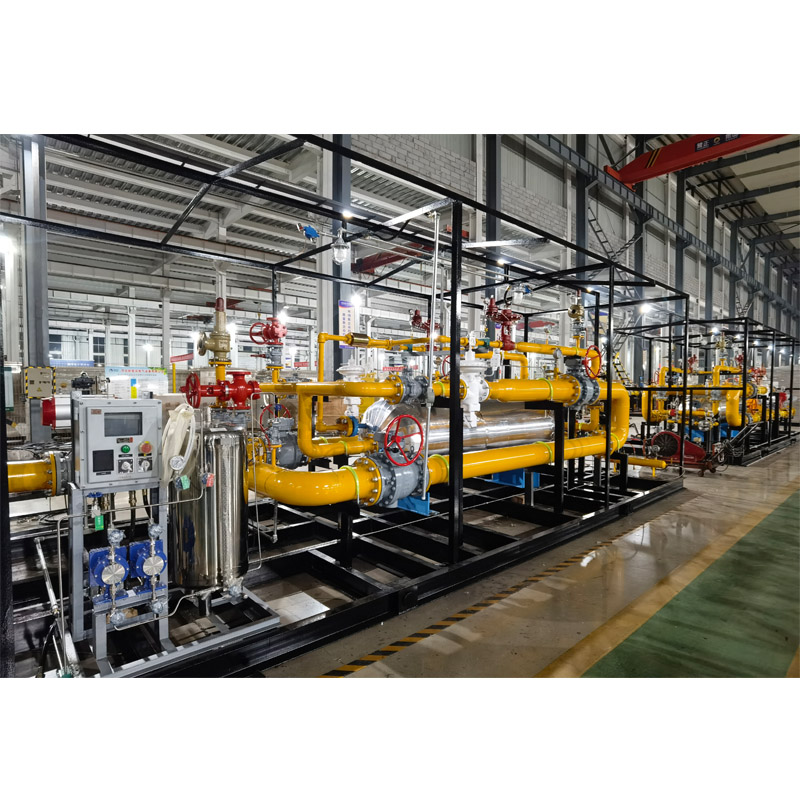
Nov . 19, 2024 05:46
Back to list
Gas Pressure Control System for Safe and Efficient Distribution
Gas Pressure Reducing Station An Essential Component of Natural Gas Distribution
In the landscape of natural gas distribution, gas pressure reducing stations (PRS) play a critical role in ensuring safe and reliable delivery of gas to end-users. These stations are essential for reducing high-pressure gas from transmission pipelines to a lower, usable pressure suitable for consumers such as residential homes, industrial facilities, and commercial establishments. This article will explore the importance, components, and operational principles of gas pressure reducing stations.
The Importance of Gas Pressure Reducing Stations
Natural gas is transported over long distances through high-pressure pipelines. This high pressure allows for efficient and economical movement of large volumes of gas. However, when this gas reaches the distribution networks connected to homes and businesses, it must be at a much lower pressure to ensure safety and prevent damage to appliances. This is where the function of a gas pressure reducing station becomes vital.
A PRS ensures that the pressure of the gas is regulated to comply with the requirements of downstream piping systems and end-users. It protects the infrastructure and users from the dangers of overpressure, which can lead to leaks, explosions, and severe damage. Additionally, maintaining correct pressure levels enhances the efficiency of gas delivery and improves the overall reliability of the gas supply.
Components of a Gas Pressure Reducing Station
A typical gas pressure reducing station is equipped with several key components
1. Pressure Regulators These are the core components of a PRS. They automatically adjust and control the gas pressure to maintain it at a predetermined level. When gas enters the station at high pressure, regulators reduce this to a lower, safe level for distribution.
2. Filters To ensure the cleanliness of the gas, filters are installed to remove any particulate matter or impurities that could clog the regulators or damage other components downstream.
gas pressure reducing station

3. Relief Valves Safety is paramount in gas distribution. Relief valves are included in a PRS to prevent overpressure situations. If the pressure exceeds a certain threshold, these valves open and safely divert excess gas, thus protecting the system.
4. Flow Meters These devices measure the volume of gas flowing through the station. Accurate flow measurement is essential for billing purposes, operational monitoring, and ensuring that supply meets demand.
5. Control Systems Modern PRS often incorporate automated control systems that monitor pressures, flow rates, and other operational parameters. These systems can provide real-time data, allowing operators to make informed decisions and respond quickly to any deviations or emergencies.
Operational Principles of Gas Pressure Reducing Stations
The operational principle of a gas pressure reducing station revolves around regulating the incoming high-pressure gas to the required lower pressure. When gas flows into the station, it first passes through the filters, which clean the gas of any contaminants. The pressure regulators then reduce the pressure to the predetermined level while ensuring smooth flow without creating excessive turbulence.
The gas, once regulated, is then directed into the distribution network where it can safely reach end-users. The relief valves act as a safeguard, activating in case of overpressure scenarios to protect both the facility and occupancy.
Conclusion
Gas pressure reducing stations are indispensable in the safe and efficient delivery of natural gas. By regulating high-pressure gas to levels suitable for consumption, they not only protect infrastructure and users but also improve the reliability of the natural gas supply chain. As we continue to innovate and modernize our energy infrastructure, the role of PRS will remain fundamental, ensuring safe, clean, and accessible energy is available to meet the needs of our communities.
Latest news
-
Safety Valve Spring-Loaded Design Overpressure ProtectionNewsJul.25,2025
-
Precision Voltage Regulator AC5 Accuracy Grade PerformanceNewsJul.25,2025
-
Natural Gas Pressure Regulating Skid Industrial Pipeline ApplicationsNewsJul.25,2025
-
Natural Gas Filter Stainless Steel Mesh Element DesignNewsJul.25,2025
-
Gas Pressure Regulator Valve Direct-Acting Spring-Loaded DesignNewsJul.25,2025
-
Decompression Equipment Multi-Stage Heat Exchange System DesignNewsJul.25,2025

